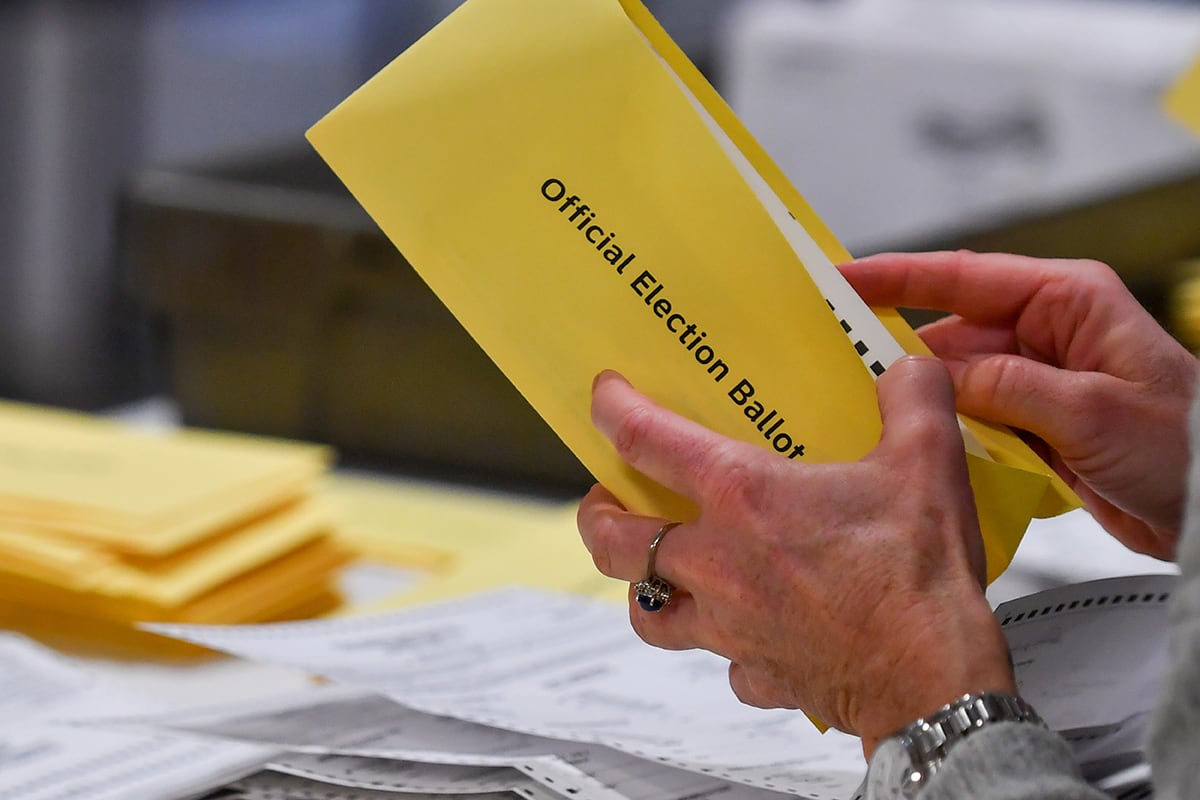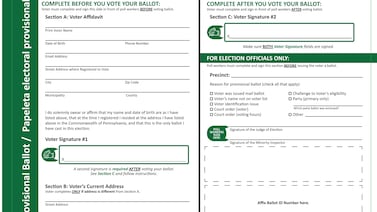Votebeat is a nonprofit news organization reporting on voting access and election administration across the U.S. Help us answer your questions about voting where you live by filling out our survey..
In the wake of a long-awaited federal court ruling, Pennsylvania counties are making diverging decisions about whether to count undated and misdated mail ballots cast during the November election.
The ruling was delivered as counties were in the middle of certifying voting results.
Counties are turning to their lawyers, leading to an inconsistent approach in ballot counting that disenfranchises some voters based on where they live.
In at least one county this week, counting the ballots changed the outcome of a local race.
“I certainly, as a former election official, had concerns on the timing,” said Jeff Greenburg, a senior advisor on election administration for the Philadelphia-based nonprofit Committee of Seventy who previously ran elections in Mercer County. “As always, it is not good if some counties are doing stuff one way and others are doing it another way.”
On Nov. 21, Judge Susan Baxter of the U.S. District Court for the Western District of Pennsylvania ruled that the date a voter writes on the envelope they return a mail ballot in is “immaterial” to the voter’s eligibility.
Her ruling was the latest in a series of court decisions going back and forth on whether or not counties must reject ballots that a voter has either failed to date, or has incorrectly marked with a date previous courts have found to be outside an acceptable time range.
The 2019 law that enacted no-excuse mail voting in the commonwealth requires that ballot return envelopes be dated. Voting rights advocates have argued that this violates a key provision of the 1964 Civil Rights Act known as the “materiality provision,” which says voters shouldn’t be disqualified over trivial errors.
“Clearly the ruling was a victory for Pennsylvania voters,” said Kyle Miller, a policy advocate with the nonpartisan group Protect Democracy, “but for it to happen during the official canvass period prior to the certification deadline certainly puts these election directors under stress.”
County election directors must finalize voting results through tasks like adjudicating provisional ballots, recording write-in votes, performing audits, and leaving time for candidates and voters to file objections. When they’re done, the county’s board of elections does a first and second signing of the final results, which is called certification.
Baxter’s ruling came during the middle of this process, and counties have taken different approaches to handling the ballots.
The Department of State advised counties to consult with their lawyers, known as solicitors, Secretary of the Commonwealth Al Schmidt said Tuesday.
Montgomery County’s decision to count the ballots appears to have reshaped the outcome of at least one race. A township supervisor race is now tied as a result of counting a handful of undated and misdated ballots and is headed toward a drawing of lots to decide the victor.
Northampton County held its final certification meeting on the day the ruling came out and did not count the undated or misdated ballots. At the meeting, the board’s solicitor said the ruling was “prospective.”
Lancaster and Dauphin counties, among others, counted the ballots and included them in their certified results.
Yet other counties, including Berks and Chester, opted to delay certification to count the ballots. As of Thursday, those counties’ results remain uncertified.
Timing causes confusion
Washington County was in the middle of the required five-day period between the first and second signing necessary for certification when the ruling came out, Elections Director Melanie Ostrander told Votebeat and Spotlight PA.
“It was frustrating because it goes to the point that the courts don’t understand the election calendar,” she said. “Looking at the date of when it was issued and what we were in the middle of, it wasn’t a good time.”
As in Northampton, Washington County’s solicitor advised that the ruling was “prospective,” Ostrander said, and such ballots should not be counted for the 2023 election. The county certified the results without those ballots included.
“This does provide more opportunity for there to be questions about the legitimacy of the election, not that those claims are founded but just the opportunity for mis- and disinformation and the opportunity for human error,” said Miller of Protecting Democracy.
As of Nov. 30, neither the Republican National Committee nor any Pennsylvania county had appealed the ruling to the U.S. Third Circuit Court of Appeals, though election officials and policy advocates widely expect that to happen.
In a similar case, a federal appeals court in 2022 ruled undated ballots should be counted. That case was thrown out by the U.S. Supreme Court as moot.
State aims to reduce errors with new design
The Department of State announced Wednesday that it has redesigned mail ballot materials to help prevent voters from making such errors, but some county officials said their vendors may have trouble incorporating the new changes.
Many changes focus on the outer envelope, which voters must date and sign.
Fields that voters must fill out, like date and signature, will be highlighted to make them stand out. The first two numbers in the field for the year will also be prefilled “20.” Many ballots are rejected annually because voters mistakenly put their birth year in this field.
The outer return envelope will now be colored to help post office employees more easily recognize it as election mail and deliver it back to election offices more quickly.
The department also changed the color of the secrecy envelope voters are required to put their ballot in from white to yellow. So-called “naked ballots,” or ones that are not returned in the envelope, are rejected by counties.
State officials are also encouraging counties to add a hole punch to the outer return envelopes before they are sent. This will allow workers to more easily see if the secrecy envelope is inside before opening the outer envelope, giving counties the option to warn voters that their ballot could be rejected.
“The Shapiro administration is committed to giving every eligible Pennsylvanian the opportunity to cast their vote and make their voice heard,” Schmidt said in a news release. “Our hope is that these new materials will better assist voters in making sure their completed mail ballot packet is filled out correctly and can be counted.”
According to data from the Department of State, counties reject tens of thousands of ballots each year for lacking signatures, proper dates, or not being returned on time. Of the 17,000 mail ballots rejected in this year’s primary, nearly half were declined for date or signature issues.
Forrest Lehman, election director in Lycoming County, said that it can be hard to change voter behavior through design alone, but he thinks the leading “20″ in the date field will help.
Department of State officials said counties must adopt the redesigned ballots.
Lehman said counties may have problems doing so because of constraints from their mail ballot vendors, the private printing companies that produce envelopes and ballot materials.
After seeing the new envelope design, Lehman said it will be difficult for Lycoming County’s vendor to print, because of the particularities of its equipment.
Ostrander said Wednesday that Washington County’s vendor was unaware of the changes until she called. The vendor is currently working to see what is feasible with its equipment, she said.
She said she is concerned that if the county is unable to follow the department’s guidance, it could be sued by outside groups.
Carter Walker is a reporter for Votebeat in partnership with Spotlight PA. Contact Carter at cwalker@votebeat.org.
Correction, Dec. 21: This article originally misstated the date of the Judge Baxter’s decision.







